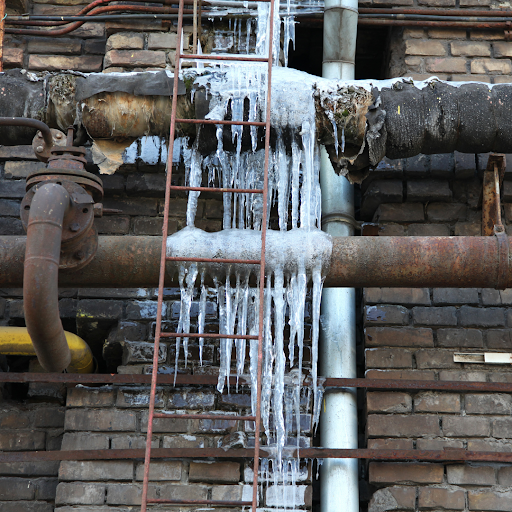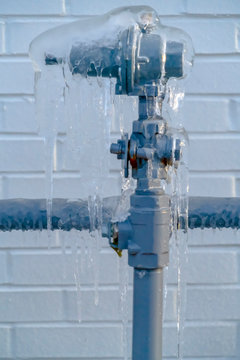They are making a number of great points on the subject of Prevent Frozen Pipes as a whole in this great article in the next paragraphs.

Winter can damage your pipes, specifically by freezing pipelines. Below's how to avoid it from happening and what to do if it does.
Intro
As temperature levels decrease, the danger of frozen pipelines boosts, possibly bring about costly repairs and water damages. Understanding how to prevent frozen pipelines is essential for property owners in chilly climates.
Comprehending Frozen Pipelines
What causes pipelines to freeze?
Pipelines freeze when revealed to temperature levels listed below 32 ° F (0 ° C) for expanded periods. As water inside the pipes freezes, it expands, putting pressure on the pipeline walls and possibly causing them to rupture.
Dangers and problems
Frozen pipelines can lead to water supply disturbances, building damages, and pricey repairs. Burst pipelines can flooding homes and trigger considerable structural damage.
Indications of Frozen Water Lines
Identifying frozen pipelines early can stop them from bursting.
How to identify icy pipelines
Seek lowered water circulation from faucets, unusual smells or noises from pipelines, and visible frost on exposed pipelines.
Prevention Tips
Protecting vulnerable pipelines
Wrap pipelines in insulation sleeves or make use of warmth tape to shield them from freezing temperatures. Focus on pipes in unheated or exterior areas of the home.
Heating methods
Keep interior rooms properly heated, especially areas with pipes. Open up cupboard doors to allow cozy air to flow around pipelines under sinks.
Shielding Outside Plumbing
Yard pipes and exterior taps
Disconnect and drain pipes garden tubes before winter months. Set up frost-proof faucets or cover outdoor taps with insulated caps.
What to Do If Your Pipelines Freeze
Immediate actions to take
If you suspect frozen pipes, maintain faucets open to relieve pressure as the ice thaws. Utilize a hairdryer or towels taken in hot water to thaw pipelines gradually.
Long-Term Solutions
Structural adjustments
Think about rerouting pipelines far from exterior walls or unheated locations. Include added insulation to attic rooms, cellars, and crawl spaces.
Upgrading insulation
Buy premium insulation for pipelines, attics, and wall surfaces. Proper insulation assists maintain consistent temperature levels and reduces the threat of frozen pipelines.
Final thought
Stopping icy pipelines needs aggressive actions and quick actions. By understanding the reasons, indications, and preventive measures, property owners can secure their pipes throughout winter.
Helpful Tips to Prevent Frozen Pipes this Winter
UNDERSTANDING THE BASICS: WHY PIPES FREEZE AND WHY IT’S A PROBLEM
Water freezing inside pipes is common during the winter months, but understanding why pipes freeze, and the potential problems it can cause is crucial in preventing such incidents. This section will delve into the basics of why pipes freeze and the associated problems that may arise.
THE SCIENCE BEHIND FROZEN PIPES
When water reaches freezing temperatures, it undergoes a physical transformation and solidifies into ice. This expansion of water as it freezes is the primary reason pipes can burst. As the water inside the pipe freezes, it expands, creating immense pressure on the walls. If the pressure becomes too great, the pipe can crack or rupture, leading to leaks and water damage.
FACTORS THAT CONTRIBUTE TO PIPE FREEZING
- Low Temperatures: Extremely cold weather, especially below freezing, increases the risk of pipes freezing.
- Uninsulated or Poorly Insulated Pipes: Pipes located in unheated areas, such as basements, crawl spaces, or attics, are more prone to freezing. Insufficient insulation or lack of insulation altogether exacerbates the problem.
- Exterior Wall Exposure: Pipes running along exterior walls are susceptible to freezing as they encounter colder temperatures outside.
- Lack of Heating or Temperature Regulation: Inadequate heating or inconsistent temperature control in your home can contribute to frozen pipes.
PROBLEMS CAUSED BY FROZEN PIPES
WHY CERTAIN PIPES ARE MORE PRONE TO FREEZING
- Pipe Bursting: As mentioned earlier, the expansion of water as it freezes can cause pipes to burst, resulting in significant water damage.
- Water Damage: When pipes burst, it can lead to flooding and water damage to your property, including walls, ceilings, flooring, and personal belongings.
- Structural Damage: Prolonged exposure to water from burst pipes can compromise the structural integrity of your home, leading to costly repairs.
- Mold and Mildew Growth: Excess moisture from water damage can create a favorable environment for mold and mildew growth, posing health risks to occupants.
- Disrupted Water Supply: Frozen pipes can also result in a complete or partial loss of water supply until the issue is resolved.
https://busybusy.com/blog/helpful-tips-to-prevent-frozen-pipes-this-winter/
- Location: Pipes located in unheated or poorly insulated areas, such as basements, crawl spaces, attics, or exterior walls, are at higher risk of freezing.
- Exterior Pipes: Outdoor pipes, such as those used for irrigation or exposed plumbing, are particularly vulnerable to freezing as they are directly exposed to the elements.
- Supply Lines: Pipes that carry water from the main water supply into your home, including the main water line, are critical to protect as freezing in these lines can affect your entire plumbing system.
- Underground Pipes: Pipes buried underground, such as those connected to sprinkler systems or outdoor faucets, can be susceptible to freezing if not properly insulated.

I found that piece on How to prepare your home plumbing for winter weather when doing research the internet. Appreciated our blog entry? Please share it. Help other people find it. Many thanks for being here. Return soon.
Book 24/7
Comments on “Essential Tips to Avoid Frozen Pipes in Cold Weather: Specialist Insights”